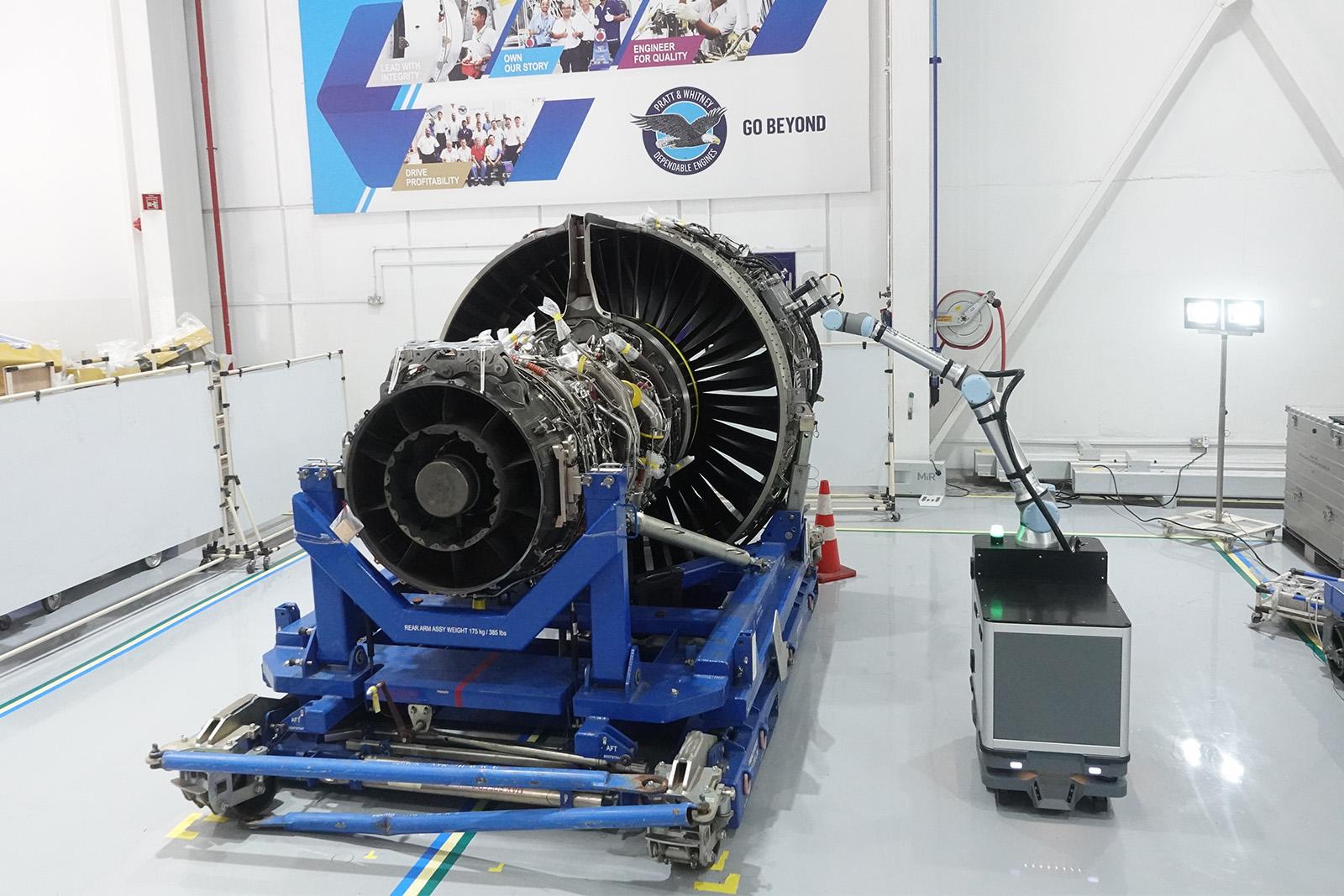
While the demand for engine maintenance, repair and overhaul (MRO) slowed during 2020-21, Pratt & Whitney took advantage of the time to accelerate MRO automation projects. “We have been systematically upgrading manual processes to be either automated or robotic-assisted” to increase productivity, boost quality through repeatability and lessen the physical load on employees,” says Joe Sylvestro, Pratt & Whitney vice president, aftermarket global operations.
Because the company was able to flatline or decrease expenses for capacity expansion, it was able to increase technology-related spending—for automation, retrofit technology, insertion technology and upgrades—to 30% of its overall capital investments during that period, Sylvestro says.
Material logistics is one project that was accelerated. Pratt & Whitney wants to track a part from when it enters its four walls “to know where every part of the engine is, every minute of the day, and then to be able to predict when it will get to where you need it to be next,” Sylvestro says.
To do that, it started two pilot projects—one at its Singapore MRO, Eagle Services Asia (ESA), and the other at its facility in Columbus, Georgia—to test two different approaches.
The pilot projects are still underway, but it became apparent that the actual building affects the sensing technology. The Columbus purpose-built facility is “one big building—it’s 460,000 ft.2” with four walls and a roof. The Singapore site includes two smaller older buildings with different ceiling heights. “We’ve learned that the sensing technologies need to fit each scenario you have, and what would work in Georgia would not work in the Singapore buildings,” he says.
There’s not an off-the-shelf technology package for this—so the investment, besides the sensing technology, includes the engineering to figure out “how we apply this to our business and make it work and then get it integrated with our IT systems,” he says. This is key, because the bigger goal is to not only track the parts but tie the work process, work cards and digital footprint throughout the process.
“The one we’re looking at for ESA, in particular, has the ability to integrate with the work instruction system that we use at that facility, so it’s able to read the bill of material, or parts, that are coming in from that engine and track it against the work scope as the engine moves through the shop,” says Tim Cormier, Pratt & Whitney vice president for aftermarket operations in the Asia-Pacific region.
Visual inspection systems are another project that Pratt & Whitney is piloting. At ESA, it’s using a cobot, which “is essentially a robot that has an automated photograph system that, alongside an operator, is used for incoming inspections,” he says. Instead of a person taking pictures of the incoming engine and writing down every component and part number, the cobot maneuvers itself around the engine and photographs the parts to ensure the right bill of materials, he says.
Like the sensing system, this isn’t an off-the-shelf technology; it has partnered with Collins Aerospace on the project, but it also takes internal programming from its associates in Singapore. “This is a good thing because we’re reducing the manual labor, but we’re upskilling the employees such that they’re more conversant in programming languages, robotics and things that the facility needs for the future” Cormier says.
To help coordinate technology programs such as these and figure out how they can be adapted to other parts of the business, Pratt & Whitney has two engineering centers that “identify the fundamental underlying technology and where it applies and then we roll it out to the particular areas,” Sylvestro says. This helps accelerate projects from concept to technology insertion at the MRO facilities.
The Singapore engineering team is focused on MRO digital twin, connected factory, robotics and advanced inspection systems. The North American team focuses on repair development technologies.
Pratt & Whitney’s aftermarket services grew 20-30% in 2021 compared to 2020, depending on the product line. Sylvestro says he expects the company’s MRO businesses to be at 2019 levels by year-end.





